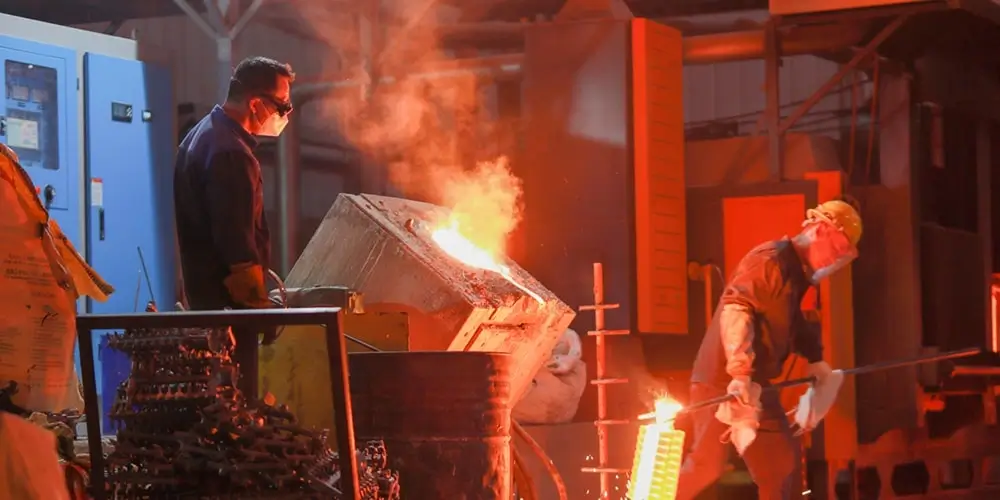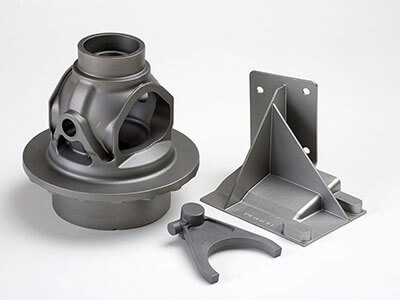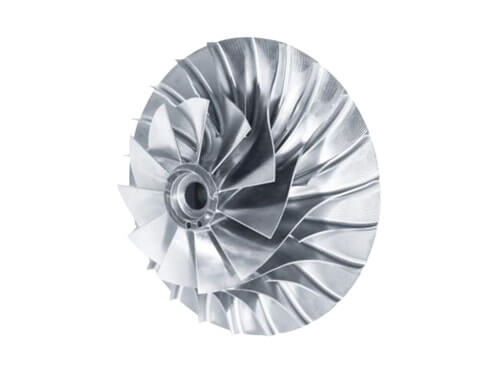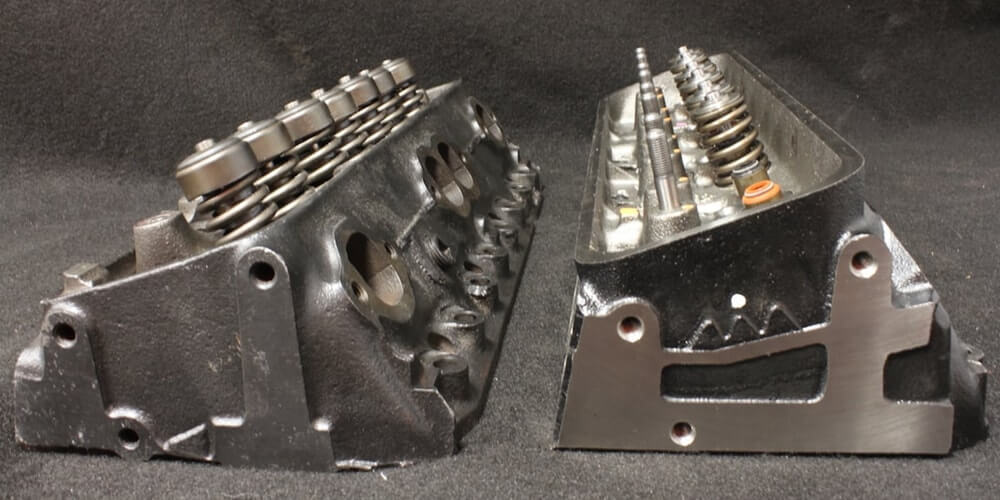Investment casting has emerged as a crucial manufacturing technique in the motor parts industry, owing to its unmatched ability to produce complex and intricate components with exceptional precision, dimensional accuracy, and superior surface finish. This advanced process, also known as lost-wax casting or precision casting, has transformed motor parts manufacturing by enabling the production of high-quality, precision-engineered components that meet the ever-evolving demands of the automotive, aerospace, and industrial equipment sectors.
The Investment Casting Process

Wax Pattern Creation: The investment casting process begins with the creation of a wax pattern that replicates the desired motor part. This can be accomplished using various methods, such as injection molding, 3D printing, or machining.
Assembly of Wax Patterns: Once the wax pattern is complete, it is affixed to a wax sprue, which forms a tree-like structure. This arrangement allows multiple patterns to be cast simultaneously, improving efficiency and reducing production costs.
Ceramic Shell Formation: A ceramic slurry is applied to the wax assembly, forming a shell. This process is repeated several times, with each layer being allowed to dry before the next application, resulting in a robust ceramic mold.
Wax Removal and Shell Firing: The wax is then removed from the ceramic shell by heating it in an autoclave or furnace. This process, known as dewaxing, leaves behind a hollow ceramic mold. The mold is then fired at high temperatures to strengthen it and remove any residual wax.
Metal Pouring: Molten metal is poured into the preheated ceramic shell, filling the cavity left by the wax pattern. The metal is allowed to cool and solidify, forming the motor part.
Shell Removal and Finishing: Once the metal has cooled, the ceramic shell is removed, typically through mechanical means or chemical dissolution. The motor part is then separated from the sprue, and any necessary finishing processes, such as grinding, polishing, or heat treatment, are carried out to achieve the desired specifications.
Material Selection for Investment Casting Motor Parts
Investment casting accommodates a wide range of materials, including ferrous and non-ferrous metals, as well as various alloys. These materials offer distinct properties, such as corrosion resistance, high strength, or lightweight characteristics, which are crucial for motor parts.
Ferrous Materials: Ferrous materials, such as carbon steel, alloy steel, and stainless steel, are commonly used for investment casting motor parts. These materials provide strength, durability, and resistance to wear and corrosion, making them ideal for engine components, transmission parts, and suspension elements.
Non-Ferrous Materials: Non-ferrous materials, like aluminum, magnesium, and brass, are also employed in investment casting motor parts. These materials are lightweight and offer excellent thermal conductivity, making them suitable for applications such as cooling system components, electrical parts, and turbocharger elements.
Alloys and Their Properties: Various alloys can be utilized in investment casting to achieve specific properties. For example, aluminum-silicon alloys provide high strength-to-weight ratios and excellent thermal conductivity, while nickel-based superalloys offer exceptional temperature resistance and corrosion protection.
Motor Parts Produced by Investment Casting
Investment casting is instrumental in producing a wide array of motor parts. The following sections detail specific components and the advantages investment casting provides for each category.
| Material | Suitable Motor Parts |
|---|---|
| Carbon Steel | Engine brackets, motor mounts, timing chain covers |
| Alloy Steel | Transmission components, suspension parts, gears |
| Stainless Steel | Exhaust system components, fuel system components |
| Aluminum | Intake manifolds, valve covers, water pump housings |
| Magnesium | Lightweight structural components, gearbox housings |
| Brass | Electrical connectors, sensor housings, fittings |
| Titanium Alloys | Aerospace engine components, high-performance parts |
| Cobalt-based Superalloys | Turbocharger components, high-temperature parts |
Engine Components: Investment casting enables the production of intricate engine parts with high precision and excellent surface finish. Examples include intake and exhaust manifolds, cylinder heads, pistons, connecting rods, camshafts, crankshafts, and valve components.
Transmission Components: The transmission system benefits from investment casting, particularly in the production of complex gears, shift forks, and gearbox housings. This method ensures precise dimensions and superior wear resistance, improving the performance and lifespan of these components.
Suspension and Steering Components: Investment casting is utilized in manufacturing suspension and steering parts, such as control arms, steering knuckles, hub carriers, and steering components like racks, pinions, and housings. This technique offers superior strength and dimensional accuracy, ensuring optimal vehicle handling and stability.
Brake System Components: Brake calipers, brake master cylinders, and brake rotors are among the brake system components produced using investment casting. This method allows for complex geometries and high-performance materials, ensuring efficient braking and improved safety.
Turbocharger Components: Investment casting is ideal for producing turbocharger components, including turbine wheels, compressor wheels, and housings. This process offers excellent dimensional accuracy and the ability to use high-performance materials, resulting in optimal turbocharger efficiency and performance.
Fuel System Components: Fuel injectors, fuel rails, and fuel pumps can be produced using investment casting, providing precise fuel delivery and efficient combustion. This method ensures high-quality components with excellent wear resistance and durability.
Exhaust System Components: Investment casting is employed for manufacturing exhaust system parts, such as catalytic converter housings and exhaust flanges. The process ensures excellent dimensional accuracy and material properties, resulting in optimal exhaust flow and reduced emissions.
Cooling System Components: Water pump housings and thermostat housings are examples of cooling system components produced using investment casting. This technique ensures excellent heat dissipation and corrosion resistance, maintaining optimal engine temperature and performance.
Electrical System Components: Investment casting is used to manufacture electrical system components, including starter motor parts and alternator components. This method offers high precision and excellent material properties, ensuring reliable electrical performance and durability.
Miscellaneous Components: Investment casting is also employed in producing miscellaneous motor parts, such as motor mounts, engine brackets, and timing chain covers. This process provides superior strength and dimensional accuracy, contributing to the overall performance and longevity of the motor.
Conclusion
Investment casting has become an indispensable manufacturing technique in motor parts production due to its ability to produce complex and intricate components with exceptional precision, dimensional accuracy, and superior surface finish. As the motor parts industry evolves, investment casting manufacturers must adapt to new trends and embrace innovations to stay competitive.
At SIPX Casting, we are committed to delivering high-quality investment cast motor parts that meet the ever-evolving demands of the automotive, aerospace, and industrial equipment sectors. Our dedication to innovation and advanced technologies ensures that our clients receive the best possible service, benefiting from cutting-edge production techniques and top-notch customer support.
By understanding the nuances of the investment casting process, material selection, and advancements in technology, we strive to achieve optimal vehicle performance, safety, and reliability for our clients.
Frequently Asked Questions (FAQ)
Q: What are the main advantages of using investment casting for motor parts production?
A: Investment casting offers several advantages, including the ability to produce complex and intricate components with exceptional precision, dimensional accuracy, and superior surface finish. This manufacturing technique is also suitable for a wide range of materials, ensuring optimal performance and reliability for various motor parts applications.
Q: How does the investment casting process work?
A: The investment casting process involves creating a wax pattern of the desired part, assembling these patterns into a tree, and then coating them with a refractory material to create a mold. Once the mold has hardened, the wax is melted out, leaving behind a cavity that is filled with molten metal. After the metal has solidified, the mold is broken away, revealing the cast part.
Q: Can investment casting be used for producing large motor parts?
A: Investment casting is suitable for producing motor parts of various sizes, including large components. However, the size and weight of the cast part may influence the complexity and cost of the process. Manufacturers often assess the feasibility of investment casting for large parts on a case-by-case basis.
Q: Is investment casting an environmentally friendly manufacturing process?
A: Investment casting manufacturers strive to implement sustainable and eco-friendly practices throughout the production process, including recycling materials, minimizing waste, and reducing energy consumption. While the process does involve the use of some expendable materials, such as refractory mold, efforts are made to minimize the environmental impact.
Q: What factors influence the cost of investment casting for motor parts?
A: The cost of investment casting for motor parts can be influenced by various factors, including the complexity of the part, the materials used, the size and weight of the component, and the required surface finish. Manufacturers often work with clients to optimize the design and production process to achieve the desired results while managing costs effectively.


